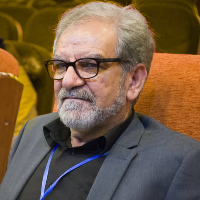Speckle filtering impact on land cover mapping using the combination of Sentinel-1 and Sentinel-2 images (Case study: Bandar Mahshahr)
Land use and land cover maps are essentially needed for socio-economic development and environment protection. Accurate and up to date maps play an important role in urban planning. Synthetic Aperture Radar (SAR) sensors provides unique information from the Earth surface due to their imaging capabilities in all-weather condition. However, inherent speckle effect limits their application. In this study, the effect of speckle filtering on the land use/land cover (LULC) classification map in Bander-Mahshahr, Iran has been studied. Dual-polarimetric Sentinel 1-A (VH,VV) and multispectral Sentinel-2B were fused for classification purposes. Different speckle removing methods such as Boxcar, Median, Frost, Refined Lee, Lee Sigma, Intensity-Driven Adaptive-Neighborhood, Gamma Map, and Lee filters were applied on the Sentinel-1A dataset. The Gram–Schmidt (GS) fusion process was chosen to integrate the multispectral Sentinel-2 data and VH, VV bands of Sentinel-1 data. Then, the LULC (land use/land cover) was produced with a random forest classifier. IDAN filter has reached the highest overall accuracy (i.e., 76.64%) and Kappa coefficient (i.e., 0.72) on the combined VH polarization image and sentinel-2 bands. Also, in combining VV polarization with Sentinel 2 bands, the median filter provides the highest performance with overall accuracy of 76.6% and Kappa coefficient of 0.7. As the study area is located in a coastal environment and there is frequent cloud cover, the combination of two polarizations VV and VH without using Sentinel-2 bands was also studied. The highest performance was provided by the boxcar filter with an overall accuracy of 95.56% and a Kappa coefficient of 0.94. The obtained results confirm the high capabilities of SAR images in LULC mapping in a coastal city
-
Combination of Semi-Empirical Radar Remote Sensing Models for Soil Moisture Retrieval During the Plant Growing Season Based on Machine Learning
Amir Sedighi, Saeid Hamzeh *, , Abd Ali Naseri, Jamal Mohammadi Moalezade
Iran Water Resources Research, -
The influence of urban stractures, vegetation cover, and utilized data in urban impervious surface mapping from multi-source data
Ali Abdolkhani, Sara Attarchi *,
Geographical Urban Planning Research,


